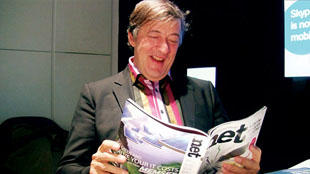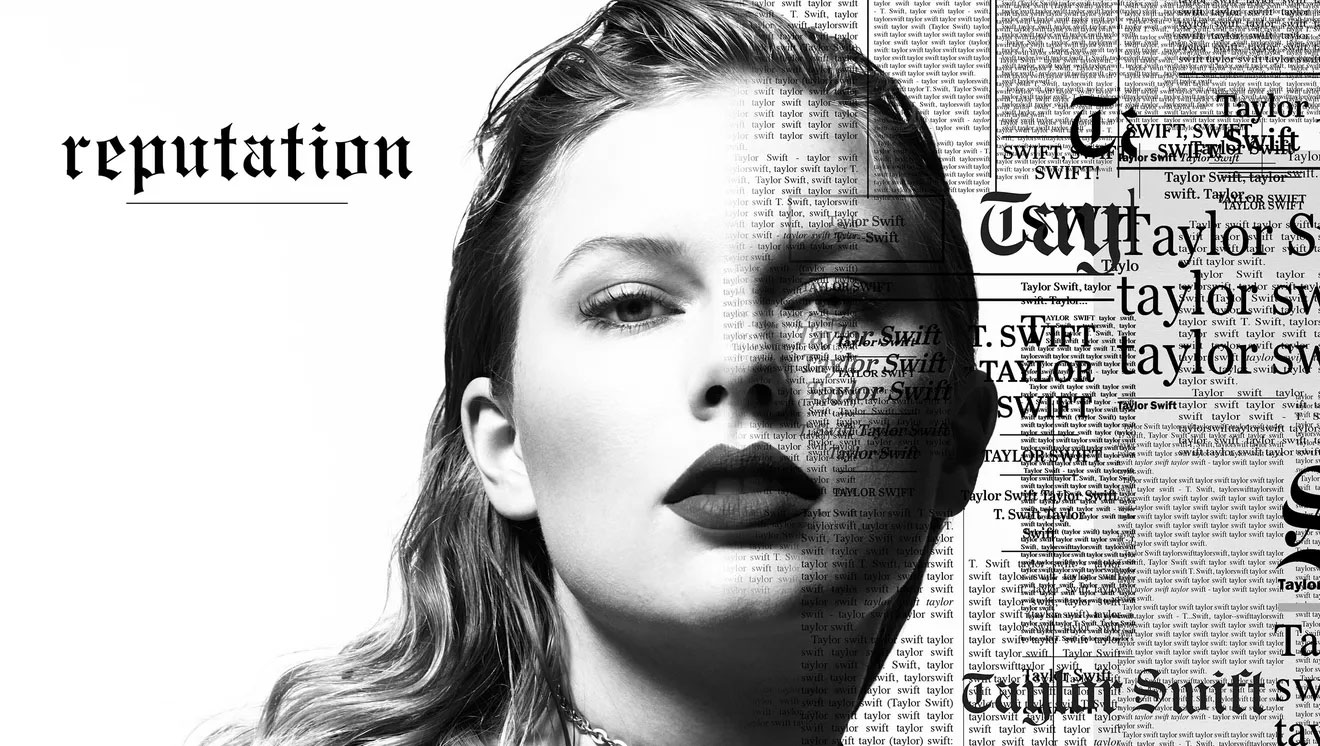Stephen Fry on Twitter and more!
He’s the actor, presenter and all-round national treasure who brought Twitter into the mainstream. Stephen Fry talks to Dan Oliver about money-making, mood swings, the Daily Mail and bringing down sites with a single tweet...
Actor, presenter, raconteur and the man who brought Twitter out of the geek ghetto and into the public eye, Stephen Fry is candid about the impact his gracefully crafted online musings can have. “When I tweet a link it usually gets around two or three thousand requests a second,” he reveals. “Especially if I word it in a way where I really want people to go to a site.” Consequently, if he’s planning to tweet about your site, products or service, you’ll receive a ‘SEVERE’ warning message from his people.
Within this email are instructions you ignore at your peril. “I just have to be very specific, and say: ‘Please go to your web guys and your host and tell them this is the kind of traffic you could get,” Fry explains.
“Fifty per cent of the time the site is down in seconds – even when we’ve contacted site owners and they’ve told us everything will be fine. It’s often an unprecedented amount of traffic, and they don’t have the required capacity.”
We’re in London to chat to Stephen Fry about his love of the web, and it has to be said, we’re a little taken aback to learn there’s such a sophisticated machine behind the man’s seemingly spontaneous twitterings. The professionalism doesn’t stop there, either. Stephen Fry and his team are pursuing an equally rigorous approach to generating cash from his million-plus followers.
“Because I have a website that attracts quite a lot of traffic [over a million uniques each month, according to his business partner Andrew Sampson], we had to monetise about six months ago,” he explains. “So we started to include adverts, and I tried to make them as tasteful and decent as possible, but it was really to pay for the extra hosting and so on that was necessary to deal with the amount of traffic we were getting. And Twitter drives that site traffic, as it promotes more interest. And so, in order to get the maximum return from these commercials, it’s good to drive traffic to the website.”

‘Stephen Fry in money-making shocker’ may surprise some, but the man is simply dealing with the same challenges we all face: increasing bandwidth costs, the responsibility of staffing a web-based business, and the fine balance between self-promotion, marketing and social engagement.
Wherever a lot of people are assembled, and are exchanging ideas quickly, there is always power
“Twitter’s astonishingly new still, and its power is only just beginning to be discovered,” he enthuses. “Not just power to advertise, but power to campaign, power to – perhaps – change politics: not necessarily in a good way, not necessarily in a bad way. But it’s power nevertheless. Wherever a lot of people are assembled, and are exchanging ideas quickly, there is always power. And people are only just beginning to learn how to use the API to its fullest potential.”
Social power
As endearing and engaging in person as he appears on television, Fry becomes most animated when talking about the social power of Twitter. The potential to promote causes he believes in is what draws him back to the service time and time again.
But it’s not always been an easy ride for the star, who has talked openly about his battle with depression. In October 2009 – when Twitter user BrumPlum had the temerity to call Fry’s posts ‘boring’ – he replied with the following tweet: “BrumPlum you’ve convinced me. I’m obviously not good enough. I retire from Twitter henceforward. Bye everyone.” It was not a joke.
I’ve made no secret of it: I have mood swings, and when a mood is down – or going down, in particular – I have the equivalent of photosensitivity
“I’ll be perfectly honest, there was a time when I felt a bit soured by the whole experience,” he says now. “To be fair to the internet, to Twitter, to everyone out there, that was far more to do with myself than with them. I’ve made no secret of it: I have mood swings, and when a mood is down – or going down, in particular – I have the equivalent of photosensitivity. I’m photosensitive to insults and it’s completely over the top, but I get terribly upset and distressed. Terribly distressed by negativity. This just happened at a bad time, when there was a series of negative things that came at the end of an extraordinary week.”
It was a week that saw Fry weigh in on two big news stories. “I’d been involved in this Trafigura case, which Twitter had helped bust open,” he recalls, referring to the gagging expose when oil company Trafigura tried to prevent the Guardian from reporting on toxic waste dumping. Then came Daily Mail writer Jan Moir’s column on the death of Boyzone star Stephen Gately, which was widely attacked for its alleged homophobia. When Fry added his own criticism, he brought a barrage of press attention, and unwittingly became part of the story himself.
“I was involved in both of these things late; I didn’t create the debate,” he says. “But because I have a weight of followers, and because journalists are naturally quite lazy, they simply monitored my Twitter feed. So I was getting the blame. Or, I was getting the blame for trying to take the credit!
“Usually it’s water off a duck’s back, kind of – but I am quite a sensitive soul. I don’t know how people like the Jeremy Clarksons of the world – who are routinely excoriated – deal with it. I think people do understand, though; and I tried to apologise as best I could.”
Fry’s return to Twitter was a slow one, and he was touched by the affection of the majority of his followers. “I’ve slowly immersed myself back into the bath, and the water’s not so scalding any more,” he explains. “I’m sploshing around enjoying myself again. I think I’m a little bit more worn. But it’s amazing how sensitive followers are. There’s an obvious rhythm to my tweeting during the day, and if I’m feeling a bit down it’s amazing how people pick up on any change, and ask if I’m okay. I just think ‘How the hell do they know?!’. It’s really interesting. Tim Berners-Lee named the web well, because it’s like the spider can sense every twitch on the web; people sense every little flick of the filament. It’s amazing how quickly it travels.”
Filesharing furore
To say that illegal filesharing should not be curbed would obviously be ridiculous, but there are levels of illegal filesharing, and there are ways of tackling it
You’d think that Fry may have become more cautious about publicising issues he feels passionate about, but recently he’s weighed into the debate over government plans to disconnect those suspected of filesharing. “To say that illegal filesharing should not be curbed would obviously be ridiculous, but there are levels of illegal filesharing, and there are ways of tackling it,” Fry argues. “The option is not either everything for free, or you seal everything up tight. What we’re arguing about is that somewhere along this continuum is where the majority of people sit. And all I would say is: look at it from their point of view.
“Twenty years ago we were making compilation tapes on cassette. Did music die? No. It was the 70s, when everything through prog rock to punk happened. It was an explosive and creative time for music. What happened is that we went through the normal changes everyone goes through. You start earning a bit of money, and you start buying CDs. That’s the journey most of us take. They’re just seeing them as a potential enemy or customer – that’s it. I find that insulting; we’re people.”
So, despite everything, Fry can’t help himself: if he believes strongly in something, he feels compelled to bring it to the attention of his followers. And this is why, although not quite at the top of the pile in terms of numbers, his followers engage with him more than any other member of the Twitter hierarchy.
His tweets are few and far between at the present moment while he concentrates on finishing his latest book (he’ll make a full return to Twitter in April), but his influence is still being felt. “I’m thrilled that by my contributing to the filesharing debate, people are talking about it more,” Fry concludes. “People haven’t been talking about it enough, and if I can play a part in getting more people discussing it, then I think that’s good.”

Thank you for reading 5 articles this month* Join now for unlimited access
Enjoy your first month for just £1 / $1 / €1
*Read 5 free articles per month without a subscription

Join now for unlimited access
Try first month for just £1 / $1 / €1
Get the Creative Bloq Newsletter
Daily design news, reviews, how-tos and more, as picked by the editors.

The Creative Bloq team is made up of a group of art and design enthusiasts, and has changed and evolved since Creative Bloq began back in 2012. The current website team consists of eight full-time members of staff: Editor Georgia Coggan, Deputy Editor Rosie Hilder, Ecommerce Editor Beren Neale, Senior News Editor Daniel Piper, Editor, Digital Art and 3D Ian Dean, Tech Reviews Editor Erlingur Einarsson, Ecommerce Writer Beth Nicholls and Staff Writer Natalie Fear, as well as a roster of freelancers from around the world. The ImagineFX magazine team also pitch in, ensuring that content from leading digital art publication ImagineFX is represented on Creative Bloq.
